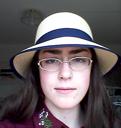Procedural Generation of Terrain
| Start time | 13:35 |
|---|---|
| End time | 13:50 |
| Countdown link | Open timer |
In games development and computer graphics, one is sometimes limited when designing assets such as textures, models and level designs by hand. An entirely handcrafted game is limited in content to that which the creator specifically put in. Procedural generation remedies this by using a combination of algorithms and stochastic aspects to programmatically certain kind of data, in this case terrain and game assets, in quantities beyond that which would be possible to design manually
This talk will cover the process of procedurally generating a landscape using open-simplex noise and adding realism using simulated erosion.
Procedural generation is the process of programmatically creating data. Its value is in generating large quantities of similar but not identical assets such as textures and models. This talk will cover the topic of using procedural generation to create a landscape, which will give an illustration of the strengths of procedural generation and ways to overcome its weaknesses.
More specifically, the topics covered are: - using layered opensimplex noise to create a heightmap, as well as an overview of types of noise and the shortcomings of purely noise-based terrain - using image processing techniques to add mountain ranges in a manner more consistent with real-world geography than noise alone would allow - further enhancing the terrain by converting it from a heightmap to voxels, and then applying an erosion simulation

I am mathematical physicist and a junior lecturer for the Learn Programming Academy. I took up Python programming during my degree independently of my studies because it seemed like a good idea at the time, and never looked back. My interests include procedural generation, games development, and blockchain. Don't ask me about blockchain because I'm still learning.